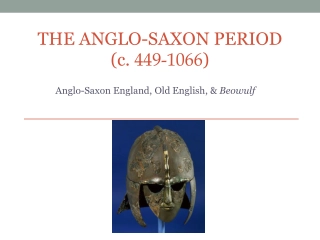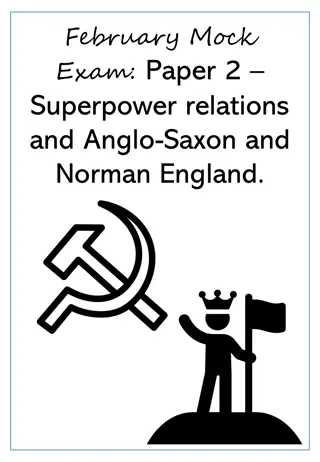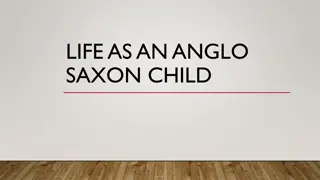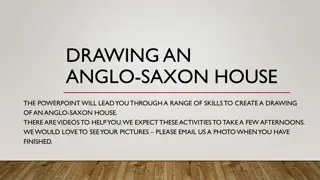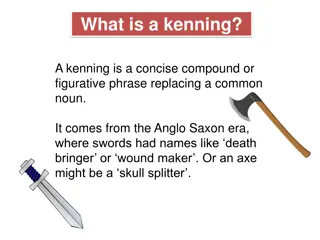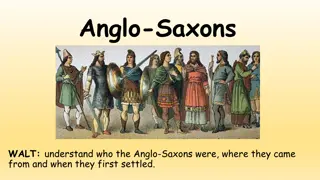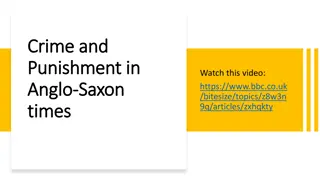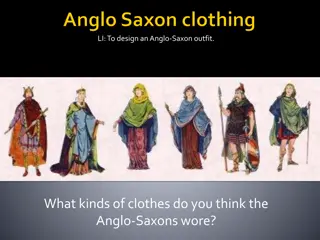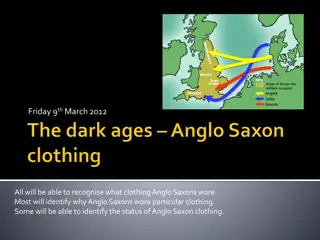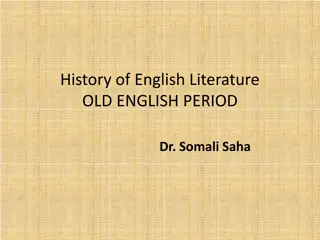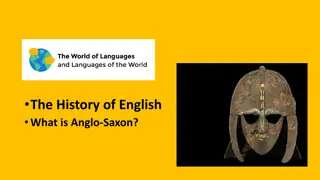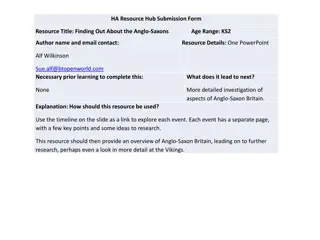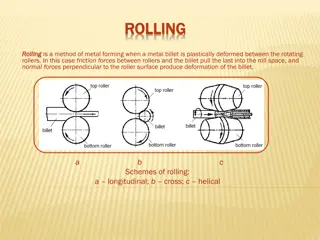Exploring Iconography and Metal-Smithing Techniques of the Anglo-Saxon Era
Delve into the rich symbolism and cultural connections of the Anglo-Saxon period through images and descriptions of Saxon wolf symbolism, Staffordshire sword seax hilt, Suffolk bracteate, Roman and Saxon iconography mix, Celtic connections, and Celtic wolf motifs. Discover the intricate details of how the wolf, as a powerful animal, influences art, names, and iconography across different cultures during this historical time.
Download Presentation

Please find below an Image/Link to download the presentation.
The content on the website is provided AS IS for your information and personal use only. It may not be sold, licensed, or shared on other websites without obtaining consent from the author. Download presentation by click this link. If you encounter any issues during the download, it is possible that the publisher has removed the file from their server.
E N D
Presentation Transcript
Iconography and Metal-Smithing Techniques With Jason N. Bellchamber
Saxon Wolf Symbolism The wolf was often an inspiration for names in Anglo- Saxon England. Bardawulf (Bright Wolf) Randwulf (Shield Wolf) Wulfric (Wolf Power/Ruler) thelwulf Wuffa And of course Beowulf
Cultural Connections In the 4thcentury as Rome withdrew from Britain they utilized Angles, Jutes and Saxons as bodyguards. The Romans capitalized on their cultural similarity of wolf idolizing - Romulousand Remusand the Saxons kinship to the wolf when they used them as hired mercenaries and soldiers in Europe.
Roman and Saxon Icons Mixed This early and unique bracteatewas a stray find made by a farmer in Suffolk. The figural images were adapted from a Late Roman Urbs Roma coin of a type issued by Constantine the Great between AD 330 and 335. The coins have a helmeted head of the emperor on the obverse and Romulus and Remus being suckled by a wolf on the reverse, which the maker of this bracteate has conflated. Such coins were widely circulated and the artist must have copied an heirloom. -British Musuem
Celtic Connections The Golden age Celts also revered the wolf as a power animal in nature http://www.bellchamber.net/catalogue/rings/four_wo lfhounds.htm The icon of the lion was first represented by a wolf in the book of Lindisfarne an 8thcentury gospel book (Saxon Hiberno/Celtic)
Other Similar Icons Ravens always found in Pairs. Lugh Irish sun gods famillairs Odin Has a pair of Ravens - Hugin and Mugin Celtic Knotwork (aka Interlace) may have been inspired by simple Saxon interlace. Celtic Interlace is developed in the 6thand 7thcentury by Pictish Stone carvers in Scotland producing Celtic Crosses under the influence of : St.Columbaof Ireland, the Saxons of York and Glasgow.
Metalsmithing Techniques The Saxons already utilized Bronzesmithing and Blacksmithing techniques to make weapons and armour. These include casting and forging of Iron or Bronze. Weapons would have been made by pouring molten metal into ingots (dies) and then hammered on anvils into different shapes (sword, seax, spear, arrowhead) and polished and sharpened with hand tools such as files or burnishers.
Jewellery Making Modern goldsmithing techniques haven't changed much when it involves handmaking gold or silver work. Techniques include: Lost wax casting, Reposse (Pushing the design from behind on a foil plate), Intaglio (using acid to etch a design into the surface of the metal), Hand Engraving with a steel point and Welding with a flame. Pairing or combining these techniques can create a very pleasing work.

